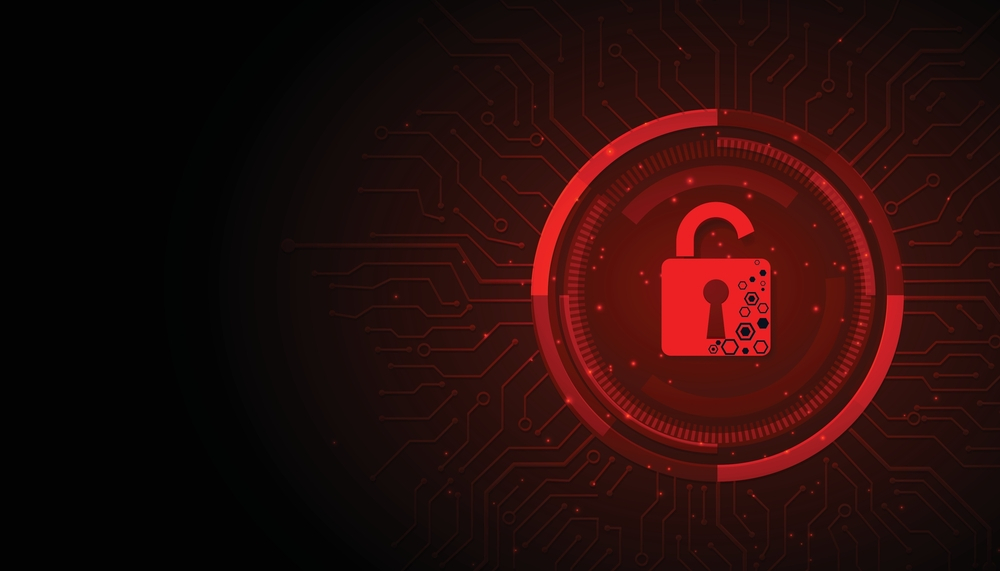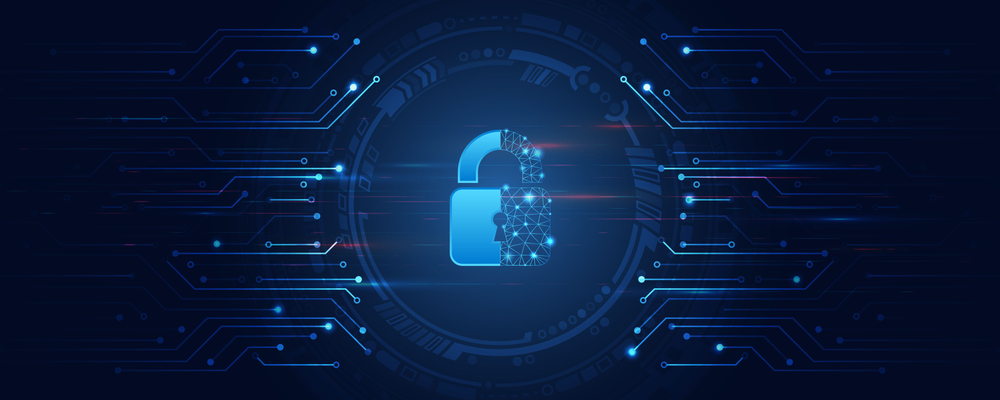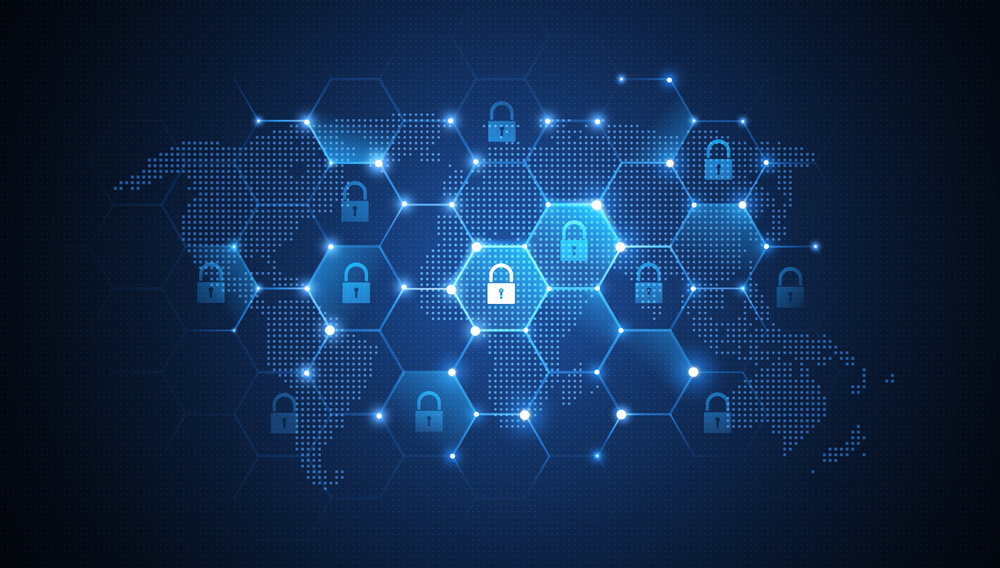Cybersecurity – Types, threats, and everything you need to know to keep your business steadfast
Digital technology has introduced a tectonic shift to the way the world is marching. From effective communication and social connectivity to automation and data storage, digitization has opened the door to greater ease. While this revolution has been a game changer, it has certain dangers. The headline flashing the buzz about cybercrime is not a surprise anymore.
Since data breaches are prevailing enormously, companies are investing heavily in cyber insurance to prevent any unprecedented loss in the future. More importantly, companies are also adopting cyber security services such as threat detection, security planning, control, etc. in order to ward the cyber evil off. Keep reading to know what cybersecurity is and how it benefits businesses.

What is cybersecurity?
Cybersecurity is securing information, data, devices, networks, programs, and systems against malicious intentions. In today’s fleet-footed world, it has become the only weapon to fight against cyber attacks that can make companies pay huge fines and lose customers’ trust.
According to a study, the global expenditure on cybersecurity stood at $6 trillion in 2022. It is only estimated to race up to $10.5 trillion by 2025 at 12.3% CAGR. Apart from that, the cybersecurity insurance market is forecast to reach $61.2 billion by 2032.
Why is cybersecurity important?
Cybersecurity goes for everyone, whether it is a company or a non-specialist. While technological advancements have given the wings to accessibility, connectivity, and automation, they have not come without an increased level of risks. Considering that, cybersecurity is a hand you can count on for securing the systems against uninvited possibilities.
Here are the top benefits of cybersecurity that make it a must for many:
Protects individuals’ data from viruses, ransomware, malware, theft, or loss, which could occur through hacking and more.
Prevents hardware from damage.
Keeps unauthorized access at bay
Safeguard finances and intellectual property.
Boosts secure payments that are initiated during online shopping.
Strengthens safety for everyone, especially those who lack knowledge about cyber threats.
Secures social media accounts and emails.
Boosts the confidence of customers.
Types of cyber threats

Cyber attacks are intended to use vulnerable factors to sneak into an individual's device or company’s system. These threats are aimed at disabling, destroying, or controlling an individual’s or organization’s data or infrastructure. A new cyber attack occurs every 39 seconds worldwide, and more than half of cybercrime activities start with an email.
Let’s look at some commonly known types of cyber threats:
1. Malware
Malware refers to malicious software wherein one can leverage any file or program to cause harm to a user. It may be in the form of viruses, spyware, and Trojans.
2. Ransomware
Ransomware is a common type of malware that helps an attacker lock the computer system files of a user. Generally, it comes to execution through encryption and the demand for a sum of money to decrypt and unlock those files.
4. Phishing
Phishing is a type of social engineering in which attackers send fraudulent emails or texts that appear to be from sources that are reputable or well-known. This kind of cyber threat takes place in the case of fetching crucial information.
5. DDoS
Distributed denial-of-service or DDoS threats are the ones where different systems interrupt the traffic of a victim system. It could be a website, server, or any other type of network resource.
Attackers bombard the targeted page with messages or connection requests. It helps them weaken or crash the system and stop genuine traffic from using it.
6. Spear phishing
Spear phishing is a form of phishing threat that disrupts a target user, which could be an organization or business.
7. APTs
In advanced persistent threats or APTs, an attacker establishes and maintains access to a network for a long period of time. The intruder continues to be unrecognized for a significantly long span of time in order to steal sensitive data.
Exploit kits, vishing, man-in-the-middle, credential stuffing attacks, SQL injection attacks, and cross-site scripting (XSS) attacks are some of the other types of cyber threats.
Types of cybersecurity

It is an uphill job to pace with the ever-evolving technologies, trends, and threat intelligence. The process of doing this is imperative in order to safeguard crucial data and other assets. The meaning and workability of cybersecurity vary depending on many factors. While it is one thing for an individual, its process is different for a business. Here are the subcategories into which cybersecurity is divided:

Network security
Network attacks are an attempt to attain unauthorized access to an organization’s data through the network the devices are connected to. Ensuring network security is paramount to safeguard the network and the information stored. Network security refers to securing a computer network from disrupters which could be targeted attackers or malware.

Cloud security
With the increase in the popularity of Cloud computing, it is vital for organizations to improve their Cloud Security strategy to protect their data from malicious malware. Cloud security focuses on solutions, policies, controls, and services that allow an organization to protect its entire cloud infrastructure and data.

Application security
This type of cybersecurity is dedicated to maintaining software and devices and securing them from threats. A targeted application can provide access to the data it is devised to protect. Security gets into the work at its design stage.

Information security
Information security is meant to protect the privacy of data in storage as well as transit. It prevents unauthorized access, modification, recording, or disruption of information. Information here can be about confidential information on your devices, mobile phone data, biometrics, etc. This type of security has experienced growth in recent years and is likely to expand more.

Operational security
Operational security involves the processes and decisions related to maintaining and protecting sensitive data assets. It includes the permissions that users get for accessing a network. This type of cybersecurity determines where and how data is stored and who should access it.

Disaster recovery
Disaster recovery helps discover how an organization should respond to a cybersecurity event or any other case that leads to data loss or operations. It involves specific disaster recovery policies that indicate how the organization has to restore its operations and sensitive information to return to its functional capacity.

End-user security
End-user education deals with the security issues caused by the user. Sometimes, a person might end up inviting a virus to a secure system. All it takes is slipping off a few security stairs. In this cybersecurity division, users are taught to ward off suspicious email attachments in their inboxes, refrain from plugging in unidentified USB drives, and many other lessons for security.
The future of cybersecurity

The rise in cyber threats is here to soar high. This factor alone is enough to give wings to cyber insurance spending. The global cyber insurance market is forecast to spike from US $12.83 billion in 2022 to US $63.62 billion in 2029 at a CAGR of 25.7%.
Ransomware has become the most common cyber attack today. In 2021, 80% of organizations experienced ransomware attacks. While it was already at its worst infliction since 2018, it peaked at 68.5% in 2021. What perplexes businesses now is the fact that this type of cyber attack is not going anywhere in the future.
The concerns surrounding cybersecurity boil down to the talent gap. According to a report by Fortinet, 80% of the organizations faced data breaches owing to the lack of cybersecurity skills. While cyber attacks will continue to walk with a dagger, the industry might not have much luck in building the army to retaliate.
In a survey, it was found that 60% of organizations face difficulties in recruiting cybersecurity professionals. From the current vantage point, despite the lucrative salaries, this crucial piece of the puzzle remains to be unfound.
Moving ahead, the keen-eyed focus on preparedness will be the highlight. Businesses will be opting for multi-factor authentication as an effective way to minimize data access to third-party individuals or applications. Experts are also trusting the fruitful advent of AI and believe that it will help automate the cybersecurity process and predict dangers.
Implementing cybersecurity for organizational assets

Regularly update all your systems and software.
Incorporate strong passwords.
Implement role-based access control.
Encrypt sensitive information.
Be careful with the pop-ups, and unknown links.
Educate your employees about cybersecurity practices.
Moreover, opting for cybersecurity services is the way to protect your business assets from every nook and corner of cyber attacks. Epixel Solutions, for example, is a digital transformation company that offers a complete set of services to protect a company's assets in cyberspace. Their route to the strongest security standards involves security planning, threat detection, control and reporting, along with robust services including network security and data security.
Cybersecurity services help organizations simmer down security concerns and lead a worry-free journey. But, it all starts with knowledge. Thus, it is best to educate everyone in your organization about the risks involved in online activities and make sure that they follow the best security practices.

3. Social engineering
Social engineering is a cyber threat involving human interaction. In this type of cyber threat, attackers manipulate the targeted user to perform tasks or reveal information that is confidential. It is practiced to gain unauthorized access to financial information, or systems, networks.